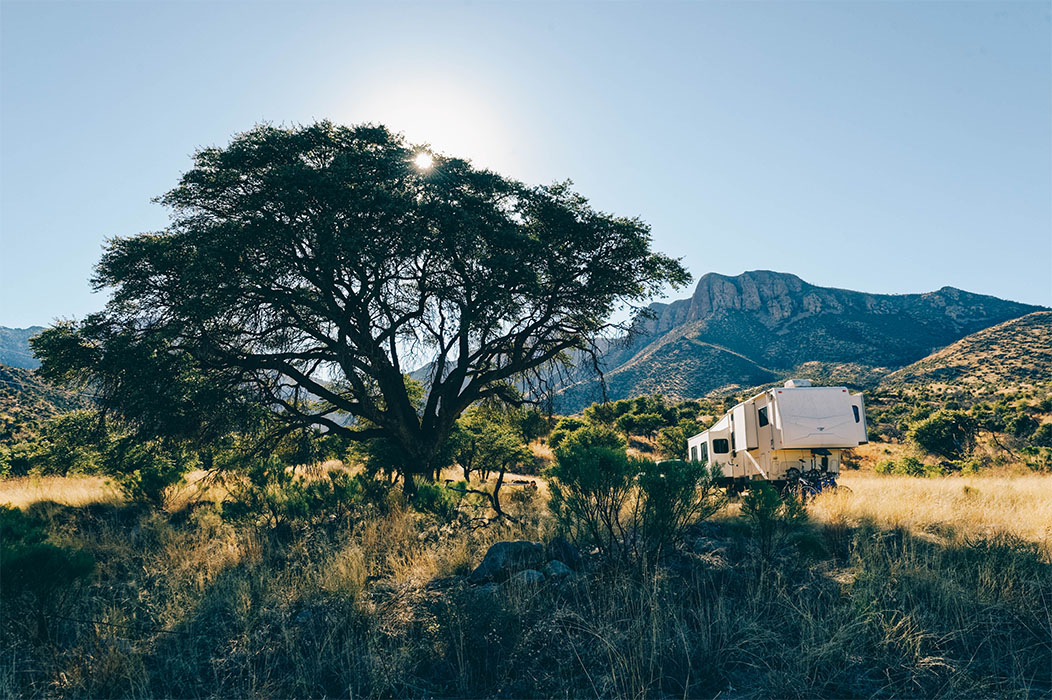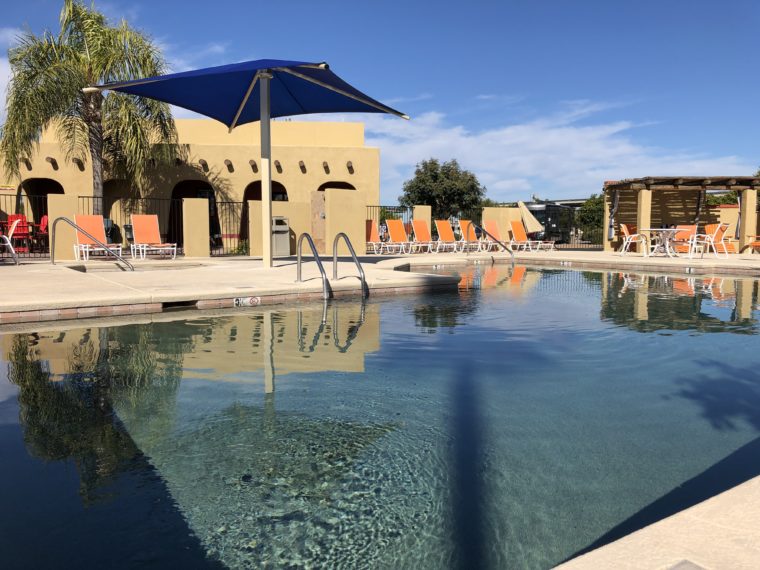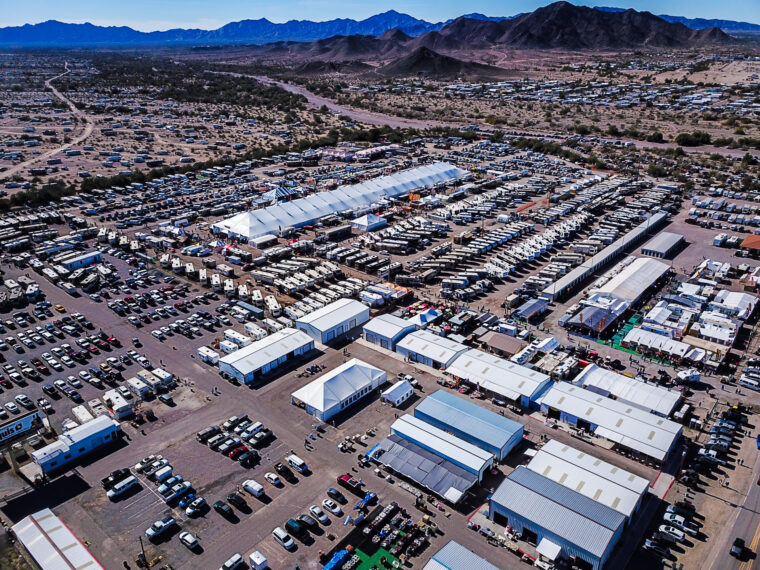Apache-Sitgreaves National Forest
Apache-Sitgreaves coats the Mogollon Rim, where frequent breezes temper the southwestern heat and creatures of all shapes and peculiarities scamper through the woodlands.
Cell service has yet to proliferate the forest, and being south of I-40 (and not far from Petrified Forest National Park), while at the same time not particularly on the way to anywhere, it’s surprising that Apache-Sitgreaves is such a popular place. That said, there is an abundance of camping, much of it free and nearly all of it of the boondocking variety, and the escape from Arizona’s summer heat is just one of the reasons one might adventure into the shade of its needle-laden limbs.
The name comes from the combination of two previously simpler named forests, Sitgreaves being the last name of the first topographical engineer to lug a scientific expedition across the region, and Apache, of course, being the name of the Native Americans living in the area long before said expedition occurred. The Fort Apache Indian Reservation now borders much of the northern and western edges of the forest, which also extends into New Mexico, and at 2.76 million acres provides endless opportunities to get lost in the woods.
Coconino National Forest
Five million people visit Northern Arizona in search of the perfect picture of the world’s largest hole in the ground every year. But if falling into the Grand Canyon isn’t your cup of geology, and perhaps you’re more interested in discovering the desert sushi and disc golf that a college town like Flagstaff, AZ manages to provide, the Coconino National Forest may be right up your arroyo.
Coconino is the centerpiece of the national forests in Arizona, smack dab in the heart of it all and bordered by the Prescott, Tonto, Apache-Sitgreaves and Kaibab National Forests. Happening Flagstaff sits like a crown atop the Coconino, and quintessentially Southwestern Sedona plays the role of ruby slippers to the south.
If the allure of Route 66 and the Amtrak line that now borders it through Flagstaff, the promise of a cappuccino with a little side of hipster mustache, and big box conveniences sound like a good place to start, the northern edge of the forest has gorgeous camping galore. Take in views of A-1 Mountain or nestle in near Walnut Canyon National Monument. Whether you end up looking skyward to the peaks or keep a safe distance as you gaze into the earth below, you won’t likely be disappointed.
Once you’ve had your fill of Flagstaff, follow Arizona 89A south for a truly stunning descent — and dramatic rise in temperature — toward Flagstaff, where ponderosa pine forests give way to expansive desert views backed by Sedona’s stunning red rock mountains.
Coronado National Forest
A collection of former national forests were combined in the early 1900s to comprise Coronado National Forest, which now extends from the mountains east of Tombstone, across Southern Arizona to just east of Tucscon and just west of Organ Pipe Cactus National Monument.
The region is rich with Wild West flare, hippy enclaves and the big city lights of Tucson. In addition to Organ Pipe, Saguaro National Park borders both sides of Tucscon, and a handful of state parks and small towns–some quaint, some best for popping in, stocking up and moving on.
On the eastern end of the affair, near Chiricahua National Monument, Sunny Flat Campground and Pinery Canyon Road offer varying degrees of remote wilderness camping, surrounded by about a dozen other boondocking, forested spots where one can enjoy the pristine nature of Southeastern Arizona’s Chiricahua Mountains without concerns of noisy cell phone interference, or simply use it as a stop over before exploring the charming ex-mining town of Bisbee.
Rose Canyon Campground, in the Santa Catalina Mountains, east of Tucson, is one of a handful of national forest camping options near the skiing community of Summerhaven, aptly named given its heaven-sent drop in temperature as you climb in elevation. Or use White Rock Campground as your basecamp to explore the seemingly otherworldly desert flora where Arizona borders Mexico.
Kaibab National Forest
After millennia of carving itself deep into the Earth’s surface, in 1909 the Grand Canyon decided to start thinking outward, and officially designated itself as the centerpiece of the Kaibab National Forest. Well, the forest may have already been there, and the forest service had perhaps something to do with establishing the million and a half acre collection of ponderosa pine surrounding the Eighth Wonder of the World. In any case, the combination seems to work as untold numbers of RVers join tourists from across the planet to visit this often unbelievable slice of Northern Arizona.
While camping is available at places like Mather Campground and Trailer Village directly in Grand Canyon National Park, those places can be crowded and often require a substantial amount of time planning in advance given the popularity of this dramatic hole in the ground.
If you’d prefer to fly by the seat of your athleisure wear pants, exploring the forests surrounding the park promises no shortage of places to setup camp while at the same time allowing for easy access to both the North and South Rims of the Grand Canyon. Kaibab is generally divided into three parts. The Northern Kaibab rests between the Grand Canyon’s North Rim and all Arizonan points beyond, reaching toward Vermillion Cliffs National Monument and the popular southern end of Glenn Canyon where it dips into the Copper State.
Free camping in the Northern Kaibab doesn’t tend to disappoint, with every national forest campsite in the area which has been reviewed on Campendium getting at least four stars, if not the whole constellation in view. Sweeping vistas from places like Forest Road 611 East Rim and Marble View make it easy to see why. Even more common conditions, you know, “just” camping in the forest, don’t tend to disappoint as spot after spot along forest roads provide a place to call home while exploring the area.
For around $20, you can upgrade your free forest camping experience and bask in all of the fire ring, vault toilet and fresh water access you can handle, with Demotte Campground and Jacob Lake being among the more popular choices.
Most people visiting the Grand Canyon are bound to approach from the south, though, given the easier access of I-40 than winding down the backroads of Northern Arizona. If North Kaibab is a smorgasbord of camping options, the portion of the forest just south of the Grand Canyon’s South Rim is the factory where they make, display and advertise smorgasbords in general. The formula for most of these spots tends to be the same: forested sites, secluded but not terribly remote, with cell reception reaching through the branches of the trees and all too often all of this splendor provided absolutely free by Mother Nature and the kindness of the US Forest Service.
If you absolutely want to spend money, you can do so at Ten X Campground, though it doesn’t improve the basic dry camping (lack of?) amenities, making this area one of the best chances to break out the solar panels, read our boondocking 101 guide, and dip your toes into the free rent that can be RV camping these days.
If your whistle is wetted with the idea of camping in this area, but you’re still wondering, “Will I like the Grand Canyon and surrounding forests, though? Really?” we have an entire guide on all the best camping in the area just waiting to further tantalize your route planning escapades.
Prescott National Forest
Divided into two separate portions, Prescott National Forest is a like a big hug squeezing in on both sides of Lonesome Valley, all anchored by the growing but still small town of a similar name. Dozens of national forest sites pepper both the eastern and western portions of the forest, where campers willing to pay a few bucks can expect vault toilets, a fire ring at their site and a water spigot nearby (though not the type you’ll be able to hook up directly to your RV mind you, more for filling up and heading back to your spot.)
Cell service across the forest, in the campgrounds anyway, tends to run rampant, so if you’re desperately dodging an onslaught of connectivity, this may not be the national forest for you. And while most of the campgrounds run by the forest service are dry camping only, a notable exception to both the cell service and boondocking nature of Prescott National Forest is Potato Patch Campground near Cottonwood, Arizona, where you’ll find electric hookups and absolutely no connection to any type of cell towers.
Cottonwood is also a prime example of the small town magic that happens in this part of Arizona. While hordes of travelers of every variety flock to Sedona regularly for its beauty, jewelry shops and bumper-to-bumper traffic, Cottonwood is a burgeoning little Main Street where a new generation of entrepreneurs are transforming gas stations into eateries and bringing the good name of avocado toast to what was once a remote dot on the map between destinations. If Prescott is its larger, more established sister, then Jerome, Arizona is the weird brother always talking about how crystals changed his life and asking if you’ve taken any time to nurture your chakras lately. Each are beautiful and worth visiting in their own right, and even if Sedona was the reason you came, these other towns provide all the more bang for your wandering buck.
While progress of the sort happening in these towns typically tends to come with inflation, like most national forests of the Great American West, Prescott is ripe with free camping as well, and available in the wide open desert and sunset varieties as well as heavily shaded pine forest types.
Tonto National Forest
Closing in on 3 million acres, Tonto is Arizona’s largest national forest, and arguably the best due to its impressive diversity. From reservoirs sparkling diamond pinpoints across their blue expanses to saguaro trees playing human statue against dramatic sunsets, small towns providing minimal services beneath the branches of towering ponderosa pine to Phoenix flanking it all to the southwest, Tonto National Forest is mountain, desert and woodlands galore.
Popular National Forest Service campgrounds like Windy Hill and Cholla Campground–where cacti of all varieties spend their days watching humankind beat the heat as the Salt River becomes Theodore Roosevelt Lake–provide the bulk of camping opportunities, while Lost Dutchman State Park promises more hookups and a perhaps more ideal location, leaving you situated at the fringes of the forest and conveniences of the cities in the Phoenix Metropolitan Area at once.
The NFS campgrounds in Tonto National Forest tend to follow a similar pattern: you pay something like $20 for a spot with a fire ring, picnic table and access to a vault toilet. A few exception have found there way into the system, including Tortilla Campground, which tends to come in at about half of the usual price but also includes water and sewer hookups. Many of these campgrounds have some degree of working cell service, and varying combinations of showers, lake access and dumpsters.
Lost Dutchman State Park wears a heavier price tag, but seems to draw on all the best the area has to offer, blankets it in cell service, provides access to showers, full hookups and tosses in sweeping views for good measure.
As you might expect, there are ample opportunities to pay absolutely nothing and enjoy the national forest as well. Colorfully named spots like Apache Trail and Coon Bluff join those with more direct names, such as Forest Road 405A and 401, spreading across the land like butter on an ATV-shaped knife.
Also of note, Tonto National Monument, one of the Southwest’s famous cliff dwellings, is located within the forest, near Globe, Arizona. While you can’t camp directly within the national monument, the Salado culture which once occupied these cliff dwellings were known for their traveling tradespeople life and are of the more fascinating pieces of North American culture.
Given the adjoining nature of Arizona’s national forests, and the diversity of cultures, ecologies and climates, one could easily spend a year bumping from one to the next, exploring cacti one week and a fossilized forest the next, catching a tan in the middle of winter or reaching for a hoodie come even the harshest of summer’s heat. And, of course, there’s so much more to Arizona to explore than just the national forests, the state is rich in options for setting up camp, it’s just that these forests provide one of the best launching points for any adventure.






